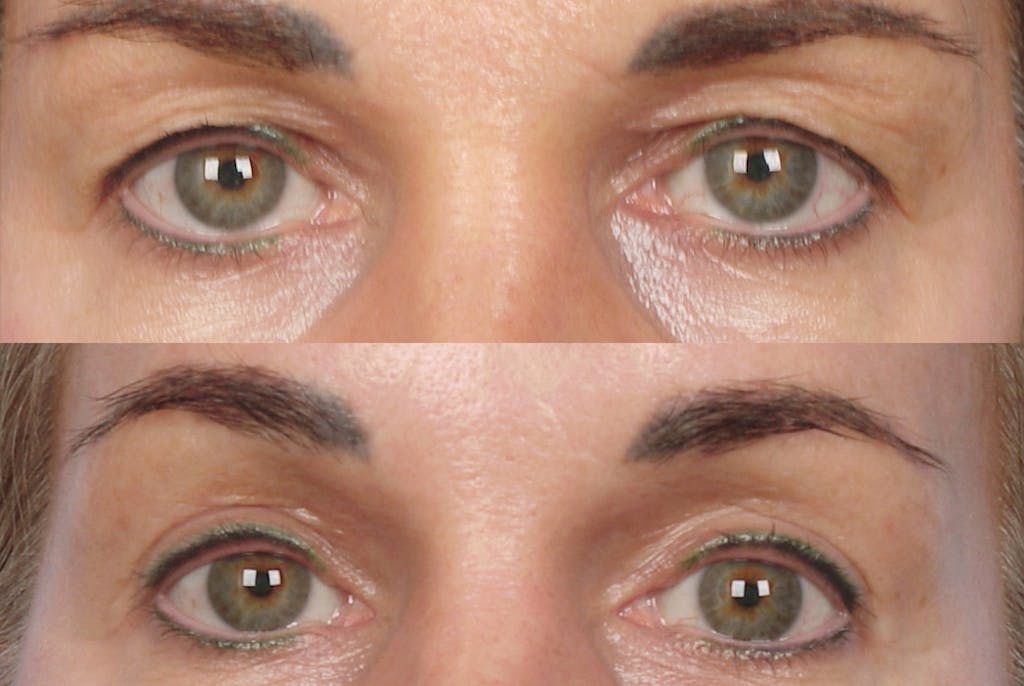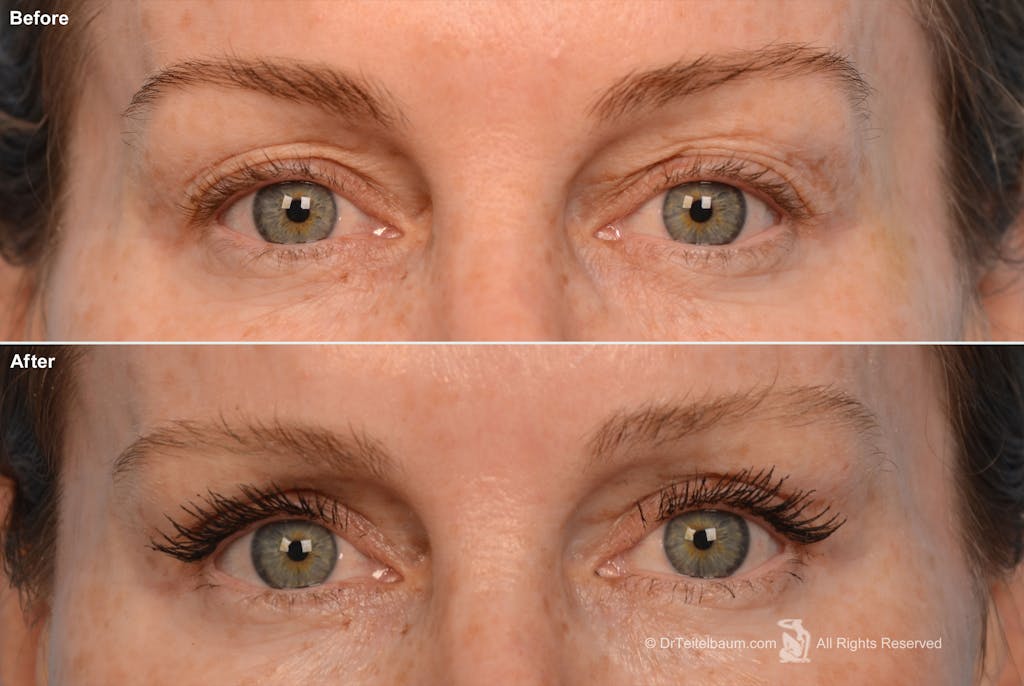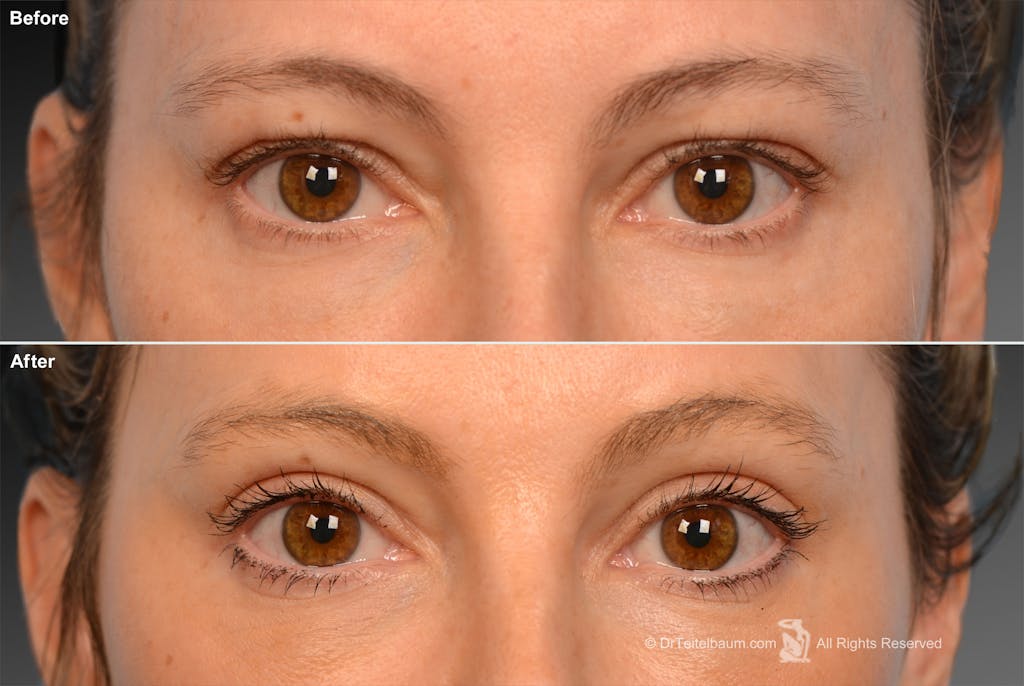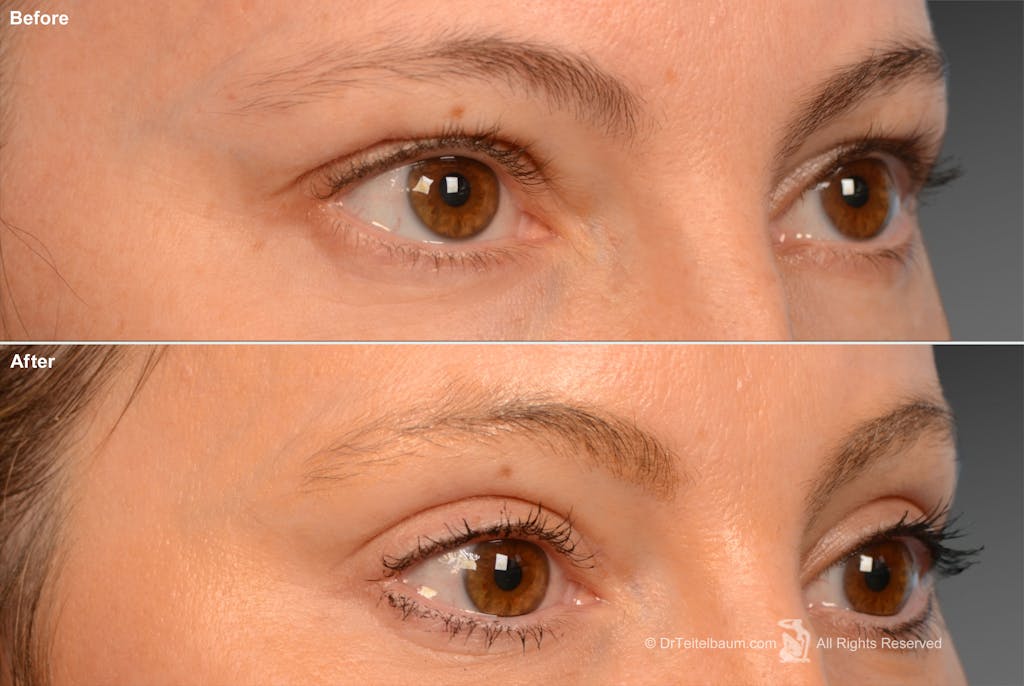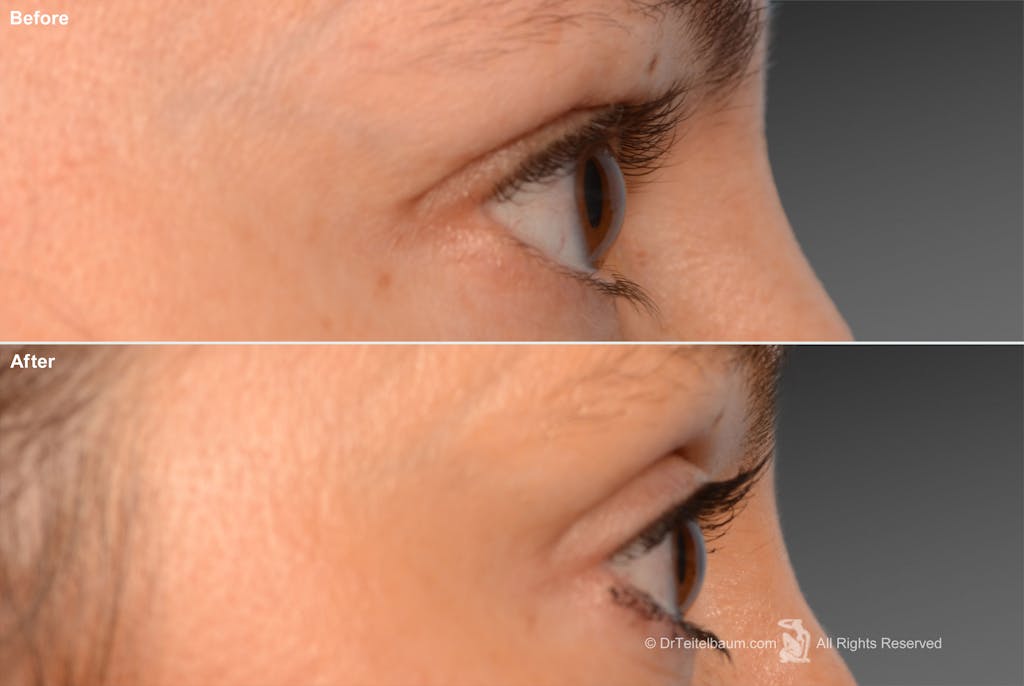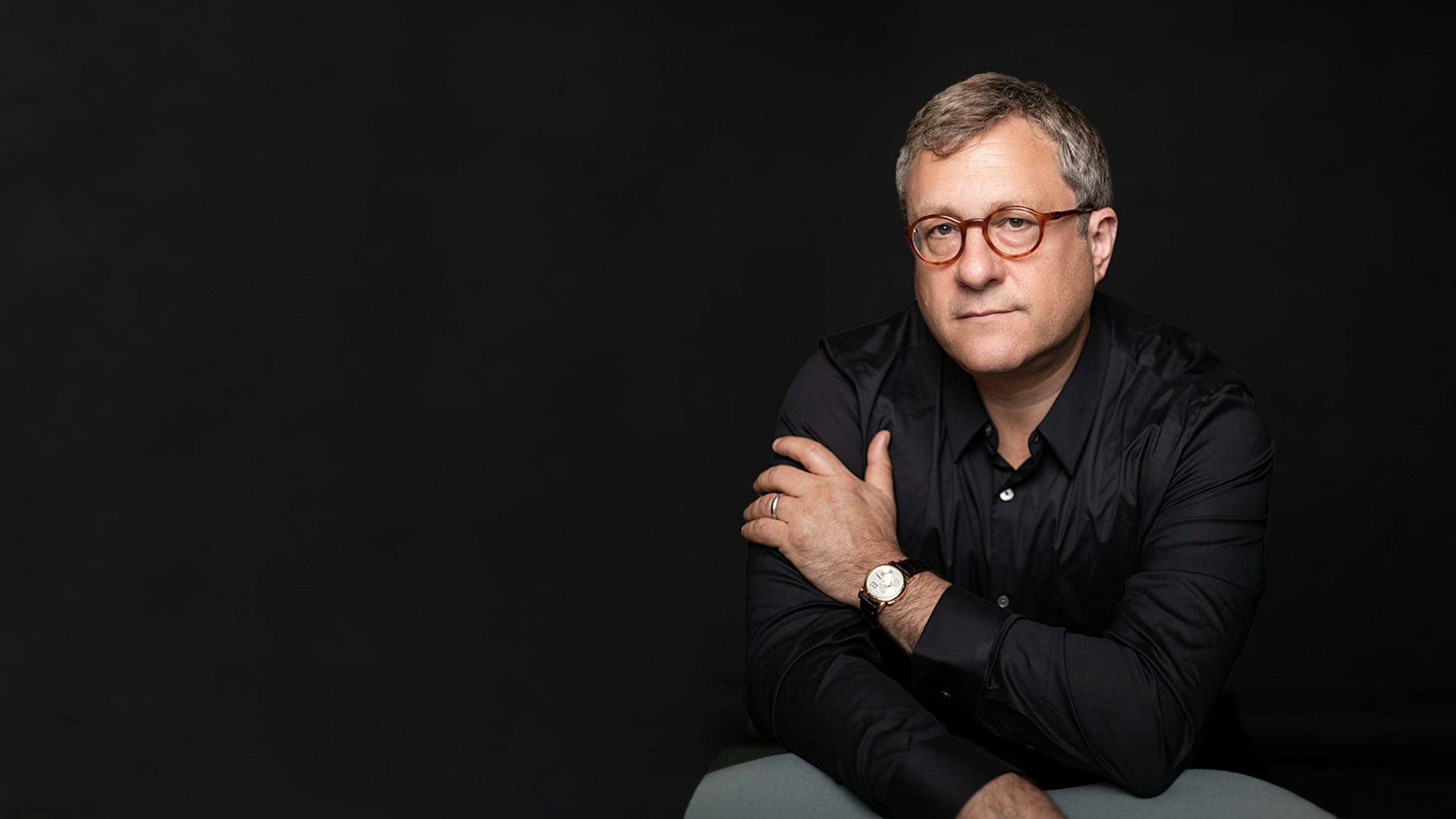With Brow Lift
No surgical plan can be determined for the upper eyes without considering the role of the eyebrows. If you push up on your eyebrow with your hand, your upper eyelid skin will be smoothed. Push down on your brow and you will see excess upper lid skin. How do you determine if you also need a brow lift? In general, if you see the fold of skin that begins in your upper eyelid continue outside of your eye socket towards the crow's feet, that is something that frequently requires a brow lift. A brow that is low and inside of the rim of the eye socket also may need a brow lift, and so too is a brow that is too low and horizontal. An ideal brow form has the tail of the brow higher than the central brow in women. It is very feminizing and creates a lighter and friendlier expression. Low and horizontal eyebrows give the impression of seriousness and lacks the levity of higher and more arching eyebrows. There are indeed differences in the ideal appearance of eyebrows in men and women which must be considered.
While it is most common for someone to only need to have an upper blepharoplasty, there are situations in which patients only need to have a brow lift, even though they thought their problem was their eyelids.
The problematic situation is the patient who needs to have a brow lift in addition to an upper blepharoplasty, but who prefers not to have the brow lift. The brow lift is more costly and entails a longer recovery. So the decision to avoid the brow lift is understandable.
But in those situations patients must understand that there may still be a fold beyond the eye socket and some residual skin in the upper eyelid. If Dr. Teitelbaum would remove enough upper eyelid skin to remove any apparent excess in the setting of a low brow, then the distance between the lash and the brow would be too short. And were that patient to ever decide later to have a brow lift, then there may not be enough upper eyelid skin to allow a full closure of the upper eyes.
When a brow lift and an upper eyelift are done at the same time, it is important that the brow is lifted the right amount and that the right amount of skin is removed from the upper eyelid. On one hand there has to be enough done to achieve the ideal result, but on the other hand it is important not to do something that makes it hard for the patient to close their eyes. Dr. Teitelbaum has done these together many times and is adept at making these decisions. But there are some situations in which there is so much excess in each area that he will encourage patients to do the one that is the largest source of the problem, let that settle, and then come back to do a maximal improvement of the other once it is safe to accurately do so.
These issues are subtle, but extremely important in terms of giving patients the most beautiful and natural appearance to their faces. Dr. Teitelbaum clearly explains to each patient how the options of eyelift alone, brow lift alone, or a combination of the two would look on them.

